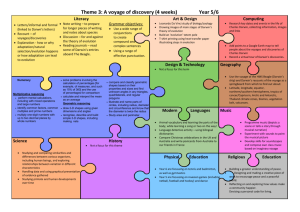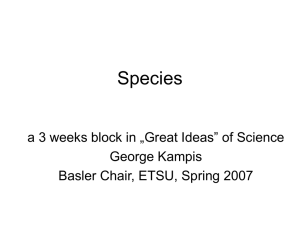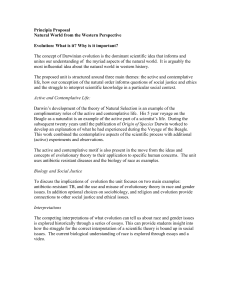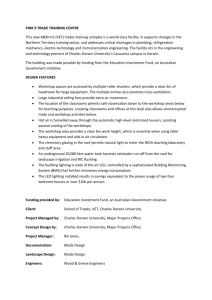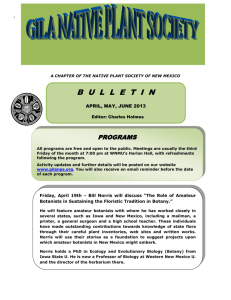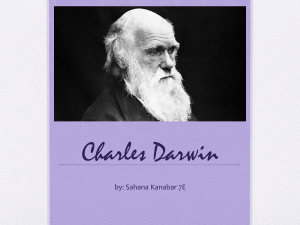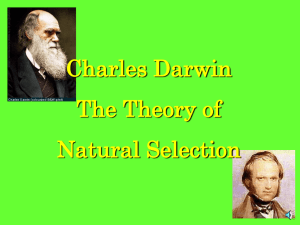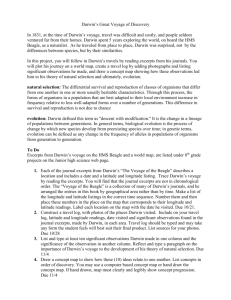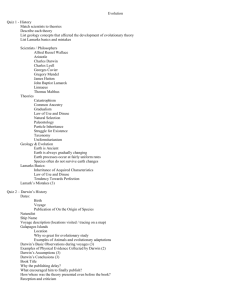BeagleText - Bryn Mawr College
advertisement
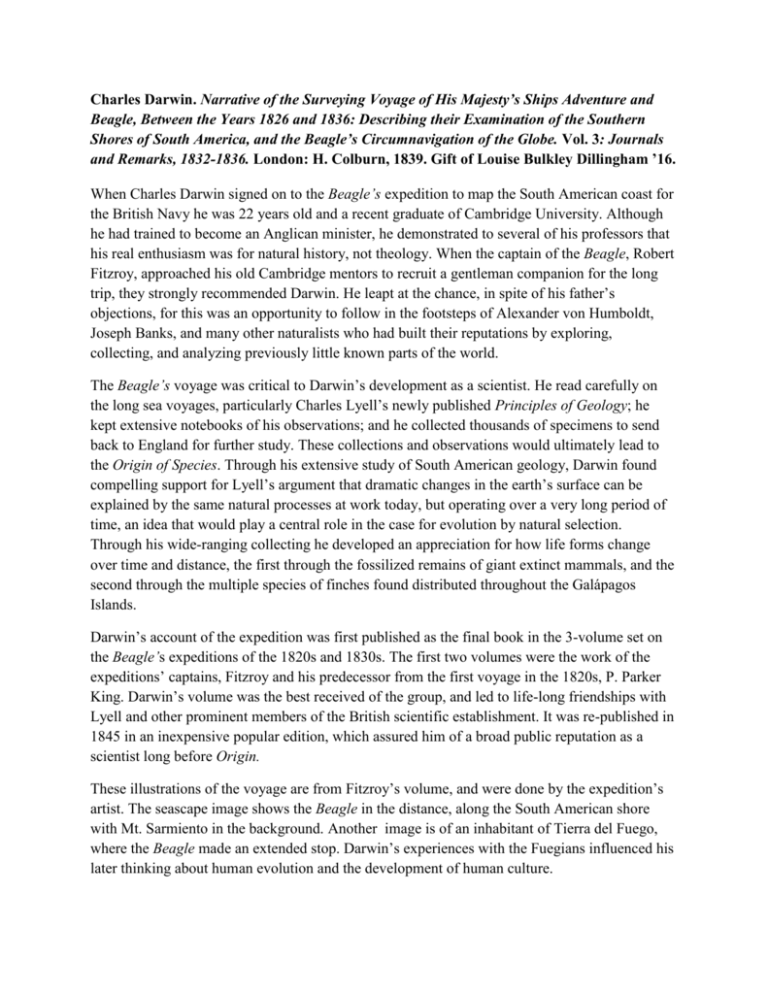
Charles Darwin. Narrative of the Surveying Voyage of His Majesty’s Ships Adventure and Beagle, Between the Years 1826 and 1836: Describing their Examination of the Southern Shores of South America, and the Beagle’s Circumnavigation of the Globe. Vol. 3: Journals and Remarks, 1832-1836. London: H. Colburn, 1839. Gift of Louise Bulkley Dillingham ’16. When Charles Darwin signed on to the Beagle’s expedition to map the South American coast for the British Navy he was 22 years old and a recent graduate of Cambridge University. Although he had trained to become an Anglican minister, he demonstrated to several of his professors that his real enthusiasm was for natural history, not theology. When the captain of the Beagle, Robert Fitzroy, approached his old Cambridge mentors to recruit a gentleman companion for the long trip, they strongly recommended Darwin. He leapt at the chance, in spite of his father’s objections, for this was an opportunity to follow in the footsteps of Alexander von Humboldt, Joseph Banks, and many other naturalists who had built their reputations by exploring, collecting, and analyzing previously little known parts of the world. The Beagle’s voyage was critical to Darwin’s development as a scientist. He read carefully on the long sea voyages, particularly Charles Lyell’s newly published Principles of Geology; he kept extensive notebooks of his observations; and he collected thousands of specimens to send back to England for further study. These collections and observations would ultimately lead to the Origin of Species. Through his extensive study of South American geology, Darwin found compelling support for Lyell’s argument that dramatic changes in the earth’s surface can be explained by the same natural processes at work today, but operating over a very long period of time, an idea that would play a central role in the case for evolution by natural selection. Through his wide-ranging collecting he developed an appreciation for how life forms change over time and distance, the first through the fossilized remains of giant extinct mammals, and the second through the multiple species of finches found distributed throughout the Galápagos Islands. Darwin’s account of the expedition was first published as the final book in the 3-volume set on the Beagle’s expeditions of the 1820s and 1830s. The first two volumes were the work of the expeditions’ captains, Fitzroy and his predecessor from the first voyage in the 1820s, P. Parker King. Darwin’s volume was the best received of the group, and led to life-long friendships with Lyell and other prominent members of the British scientific establishment. It was re-published in 1845 in an inexpensive popular edition, which assured him of a broad public reputation as a scientist long before Origin. These illustrations of the voyage are from Fitzroy’s volume, and were done by the expedition’s artist. The seascape image shows the Beagle in the distance, along the South American shore with Mt. Sarmiento in the background. Another image is of an inhabitant of Tierra del Fuego, where the Beagle made an extended stop. Darwin’s experiences with the Fuegians influenced his later thinking about human evolution and the development of human culture.
